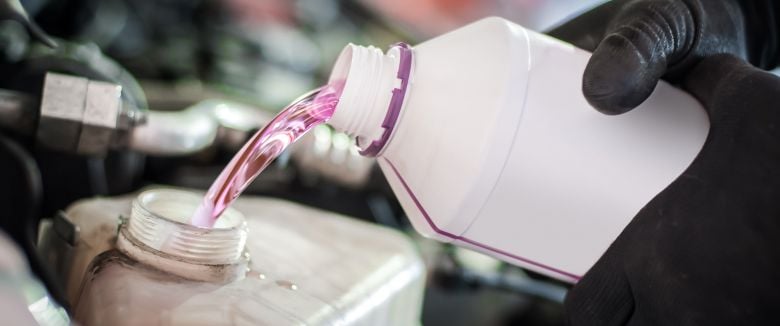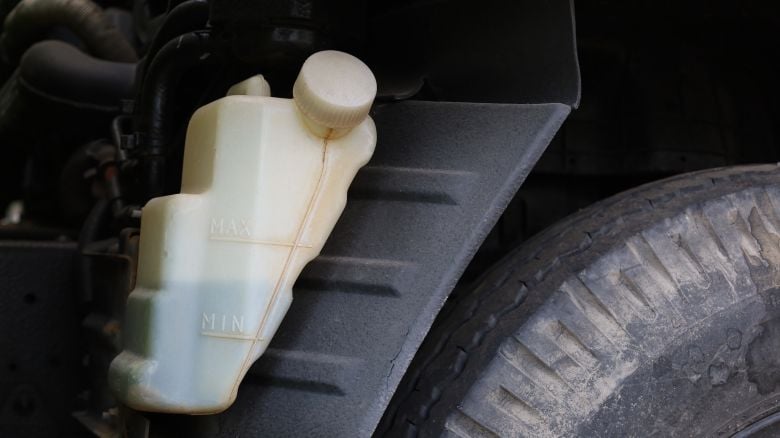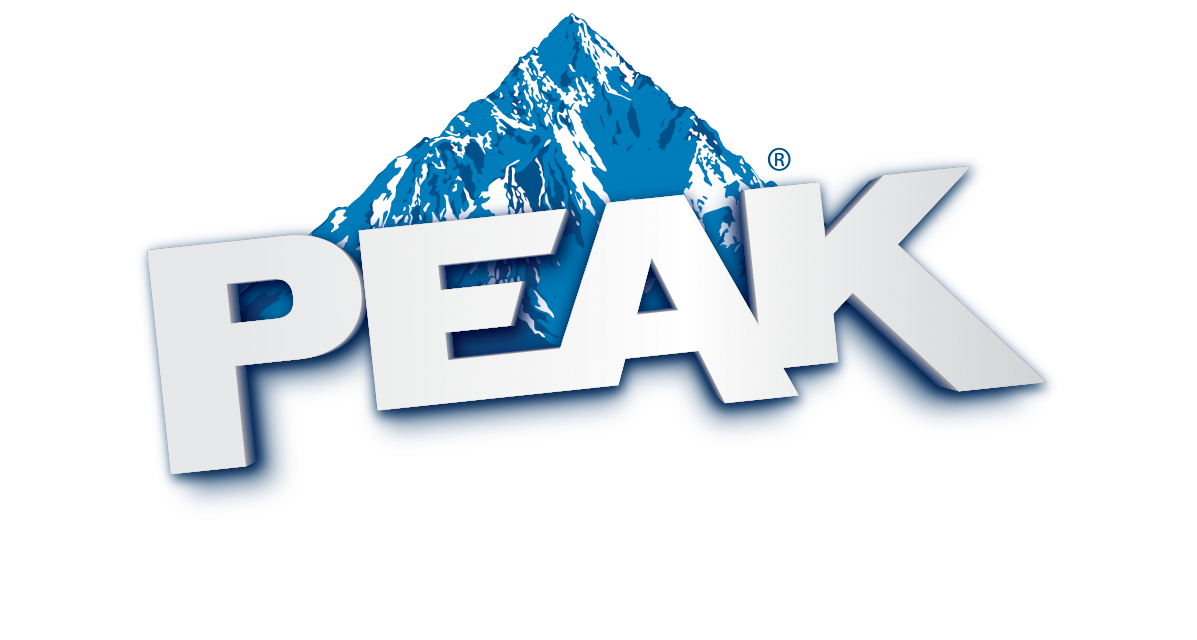
Everything You Need to Know About Antifreeze
- Vehicle Maintenance
- PEAK
- June 18, 2025
Here's everything you need to know about buying, handling, and using antifreeze.
Gas-powered, electric, and hybrid vehicles all rely on antifreeze, a well-known but widely misunderstood product that regulates the operating temperatures of automobile engines. This guide takes a deep dive into the world of antifreeze, led by an OWI team antifreeze expert. Here’s everything you need to know about buying, handling, and using antifreeze.


What is antifreeze?
Antifreeze is a liquid additive that prevents the water in your vehicle's cooling system from freezing during extremely cold weather, or overheating in hot weather. It also:
- Helps control the temperature of critical metals found in automotive engines
- Optimizes engine operating temperatures to enhance fuel efficiency in gas-powered vehicles and lubricate electric motors
- Inhibits corrosion of the metal parts in your vehicle's cooling system
Manufactures make two main types of antifreeze: automobile antifreeze for regular passenger vehicles, and heavy-duty antifreeze for freight trucks. This guide mainly focuses on regular automobile antifreeze.
Antifreeze vs. coolant: Is there a difference?
You'll often see antifreeze referred to as "coolant." Some manufacturers (including us) use both terms on their product labels. "There's very little technical difference between antifreeze and coolant," OWI antifreeze expert says. "The two terms are functionally interchangeable."
Concentrated vs. diluted antifreeze
You can buy antifreeze in two forms: as a concentrate with no added water, or in a ready-to-use (RTU) formula that's been pre-diluted with water, usually in a 50/50 ratio.
There's a common misconception that the term "antifreeze" technically refers to the concentrated form while "coolant" describes antifreeze that's been diluted with water. However, as OWI Antifreeze expert notes, this isn't quite accurate.
"Antifreeze can be concentrated or ready to use, and coolant can be concentrated or ready to use," they explain. The term(s) a particular product uses depends on labeling conventions and applicable industry standards.
"If you put an antifreeze concentrate straight into your car, it won't heat or cool appropriately and your vehicle will likely overheat," OWI AFC expert says. "You'd need to do an immediate antifreeze flush-and-fill, then an antifreeze refill with the appropriate dilution ratio."
Passenger vehicles typically need a 50/50 concentrate-to-water ratio, but your owner's manual will specify the correct ratio for your car. Always refer to your manual before attempting any DIY fluid maintenance.
What is antifreeze made of?
Antifreeze consists of three main components, which work together to generate its performance characteristics:
- Glycol: These base fluids prevent boilover and protect against freezing. Commonly used formulations include ethylene, diethylene, and propylene glycol.
- Inhibitors: These constituents have anticorrosive properties that protect engine metals from rust. In past decades, antifreezes used inorganic components but most manufacturers (including us) have switched to organic acid technologies (OATs).
- Water: Water acts as a heat transfer medium for regulating engine temperature.
Some products, including several PEAK antifreezes, contain phosphated OATs. Others have silicates or nitrates. Each of these inhibitors offers its own unique set of performance characteristics.
"Phosphates tend to work well in engines with larger proportions of aluminum because they reduce the cavitation that erodes metals," OWI AFC expert explains. "Silicates and nitrates create a barrier around metals, acting almost like an insulator against corrosion."
Advanced antifreeze formulations often contain phosphates, silicates, and nitrates in various combinations, allowing them to work together to provide optimal protection for specific types of engines.
Common questions about antifreeze
For most drivers, the practical aspects of antifreeze are the most important. These FAQs explain all the essential details:
How often should I change my antifreeze?
Car manufacturers publish their own model-specific guidance on how often you should perform an antifreeze flush-and-drain. As our OWI AFC expert notes, precise details can vary significantly from one manufacturer to the next.
"Looking at the 'Big Three' U.S. automakers, you've got Chrysler and Ford that recommend a flush-and-fill type of service about every 30,000–50,000 miles," they explain. "GM has historically recommended cooling system flush-and-drain service when the vehicle reaches 150,000 miles."
Your owner's manual will specify how often you should perform an antifreeze flush-and-drain. It's also important to read and understand the guidance contained on antifreeze product labels.
"Antifreeze labels have protection charts and other important information," they note. "The protection chart will specify the temperature range under which the formulation will work as intended. Label claims will also tell you how much mileage you can expect to get from a particular product."
What should I look for when I buy antifreeze?
The single most important thing to do before you buy antifreeze is consult your owner's manual to see if your vehicle requires a product with specific performance characteristics.
"Some antifreezes fall into the 'all makes, all models' category. Others are made for very specific vehicles or vehicle classes," OWI AFC expert explains. "You can always opt for an 'all makes, all models' product but if you're inclined to do research and be very specific to your car, you can do that too."
Price points also provide clues about product performance. Antifreezes sold at higher price points tend to have longer mileage ratings or are specific to your vehicle. Economical products will get the job done, but premium formulations generally last longer and provide better protection for a specific make or model.


How do I check antifreeze levels?
Generally, you should check your antifreeze levels twice a year — once before summer, and once before winter. These seasons tend to bring the year's most extreme temperatures, and you'll want to make sure your engine has everything it needs to regulate heat.
Most vehicles have a transparent coolant reservoir with labels for F (full) and L (low). In most cases, you'll be able to see where your antifreeze levels are without even removing the reservoir cap. However, you may need to take the cap off to look inside and see how much fluid the reservoir contains.
How do I put antifreeze into my car?
If your antifreeze levels are low and your vehicle isn't scheduled for flush-and-fill service, you can just top off your antifreeze by pouring a properly diluted product directly into the reservoir.
Be sure to follow these important safety tips and best practices as you work:
- Never add antifreeze to a hot or warm engine. Instead, wait until the engine is completely cooled off.
- Do not open any reservoir caps when the engine is hot or warm, as dangerous fluid ejections could occur.
- If a visual inspection of the coolant in your reservoir reveals an oily or sludgy film, take your vehicle to a professional technician. You may have a leaky gasket.
Most people take their vehicle to a professional when it's time to drain or flush the engine's cooling system. However, you can also do it yourself if you're a confident DIYer.
Draining your coolant is a relatively straightforward task suitable for people with moderate DIY experience. Complete cooling system flushes are more complicated, and it's only recommended for seasoned DIYers with strong working knowledge of automotive systems.
Consult our guide on how to flush and fill antifreeze and coolant, and check out these instructional videos from our DIY Hub:


What is the shelf life of bottled antifreeze?
As the OWI AFC expert explains, "The general rule of thumb is that antifreeze has a shelf life of about three to four years, with a maximum of about four to five years. After that, the additives tend to fall away from the chemicals and it stops being as protective."
"Most people buy coolant, use a little bit, then stick it on a shelf in their garage. If you don't know how long it's been there, you should probably buy a fresh bottle," they advise.
Safe handling tips and how to dispose of antifreeze
Whenever you handle antifreeze, be sure to follow these important safety and pollution prevention practices:
- Keep the product in its original bottle to prevent misidentification.
- Always keep antifreeze firmly sealed and out of the reach of children and pets.
- Always wear gloves and use splash guards when draining, flushing, or pouring antifreeze, and always work in a well-ventilated space.
- Never pour antifreeze down the drain or onto the ground (indoors or outdoors).
- Dispose of used antifreeze through your local automotive retailer or your municipal hazardous waste management program.
If you spill antifreeze while you work, clean it up immediately. Highly absorbent substances like kitty litter or sand work well, but you can also use regular paper towels.
In case of skin contact, wash the affected area with lukewarm water for at least 15 minutes. Seek immediate medical attention if a burning sensation or other unusual symptoms appear.
What makes PEAK antifreeze coolant unique?
"We have one of the largest offerings of different antifreeze formulas of any manufacturer on the market," our OWI AFC expert says.
PEAK is one of very few antifreeze brands that offers a complete lineup of both versatile, universally compatible coolants as well as specialized premium blends. As they put it, "We have formulas that are universally compatible, and we have formulas that are very specific if that's what you'd prefer."
PEAK's new Titanium antifreeze merits a special callout in the context of high-performing premium products. It features a proprietary chemical blend that cleans component surfaces while also protecting against the heat-insulating coatings and films that can build up in engines and inhibit heat control.
PEAK Titanium delivers:
- 15-year, 500,000-mile protection
- Guaranteed lifetime protection against scaling and corrosion
- All-vehicle compatibility
It earned a perfect 10 in ASTM D2809 water pump protection testing, and it also meets ASTM D6210, D3306, and D4985 performance standards.
Explore PEAK's diversified lineup of antifreeze coolants
Beyond the proprietary Titanium blend, PEAK also offers a complete lineup of all-purpose and specialized antifreeze formulations. Key highlights from our antifreeze product line include:
- PEAK Global for all makes and models
- PEAK Conventional antifreeze/coolant for older vehicles
- PEAK Original Equipment Technology designed to match the technology and color requirements of your vehicle
- PEAK RV & Marine antifreeze for recreational vehicles and boats
To learn more, browse our full collection of high-performance PEAK antifreeze coolant products.

